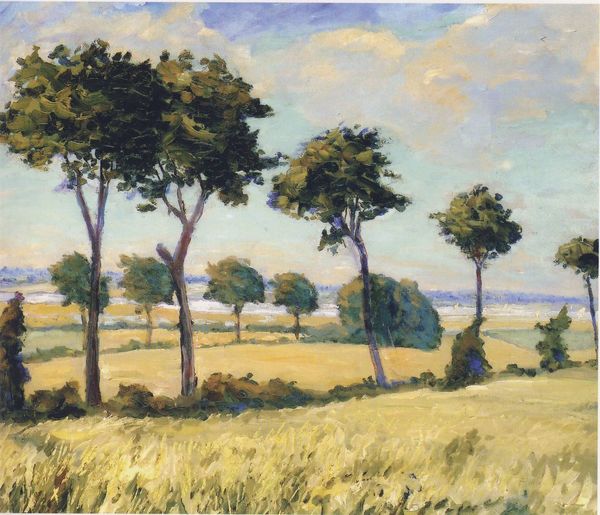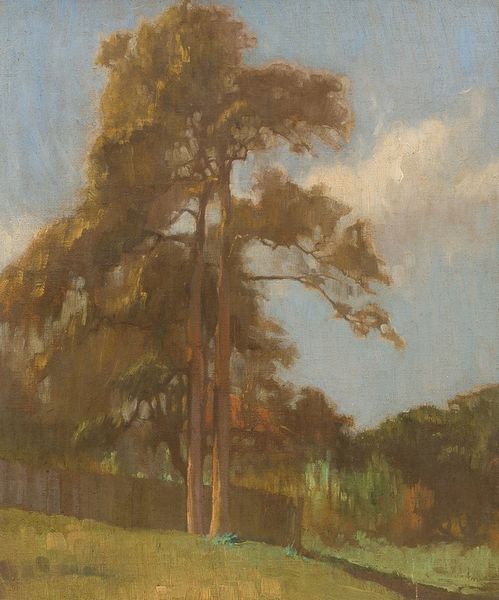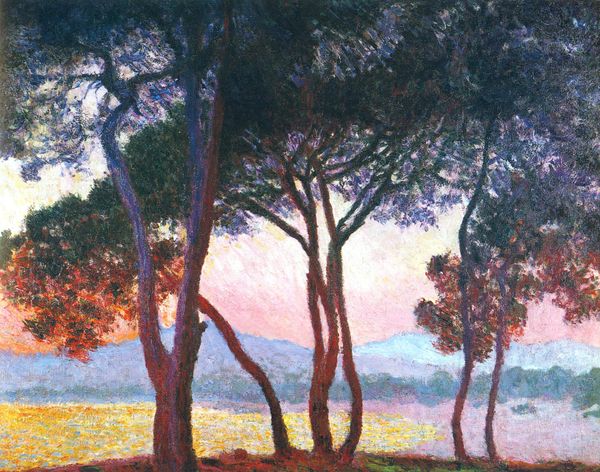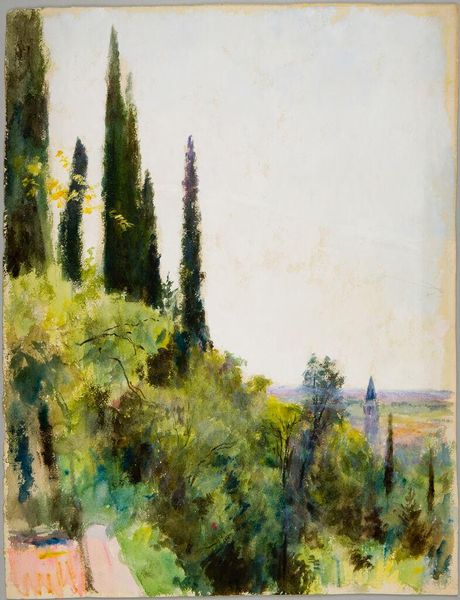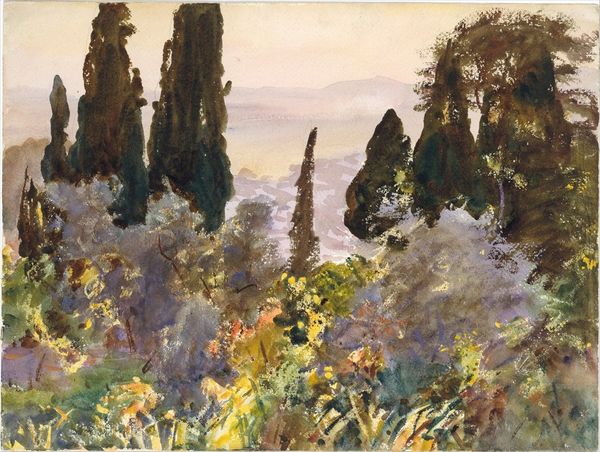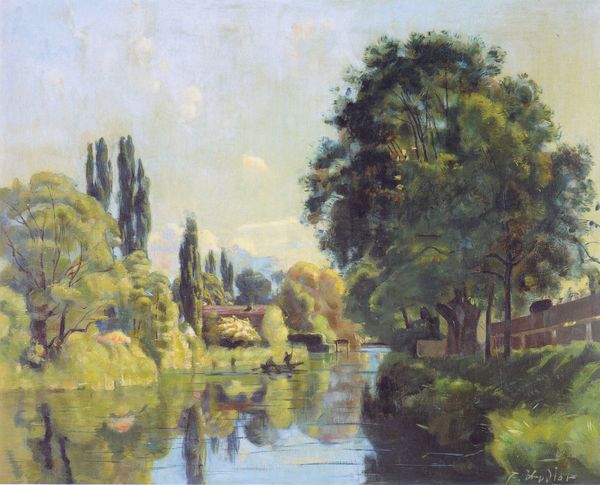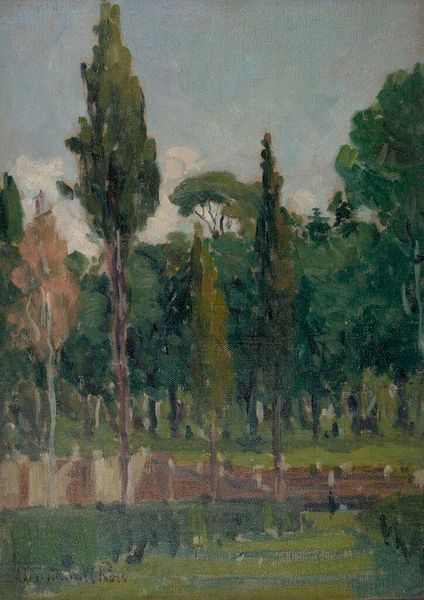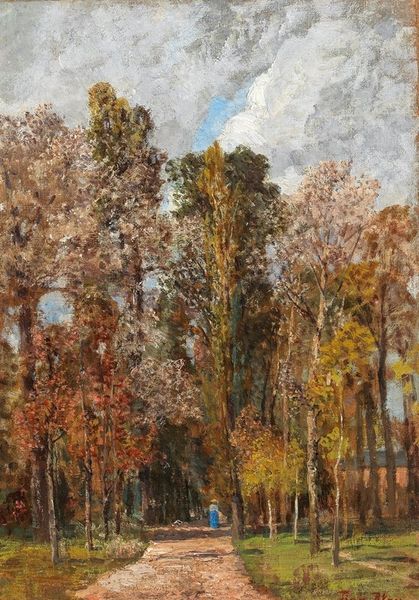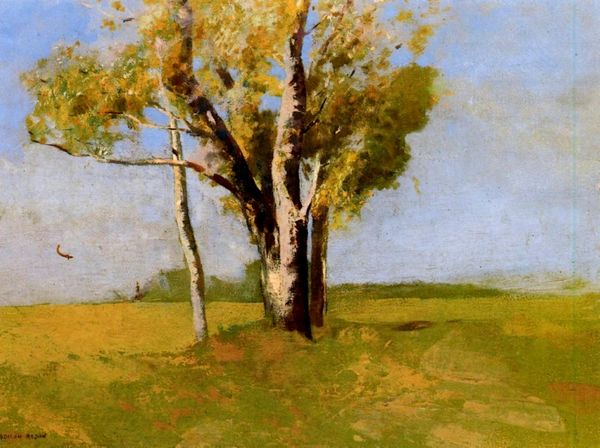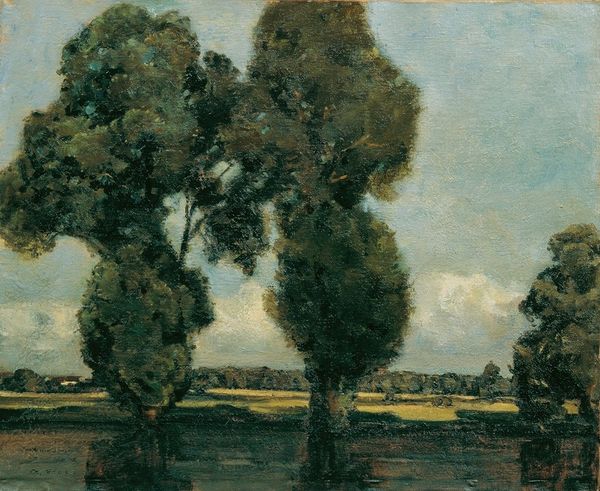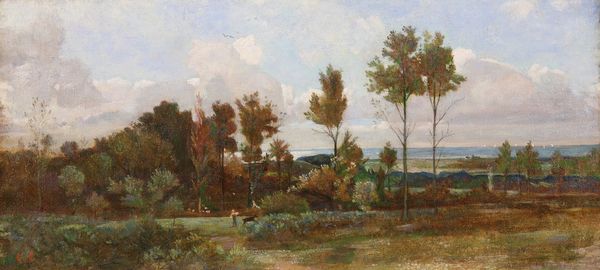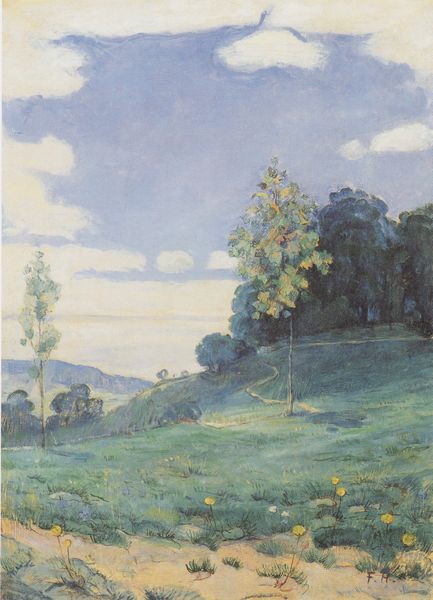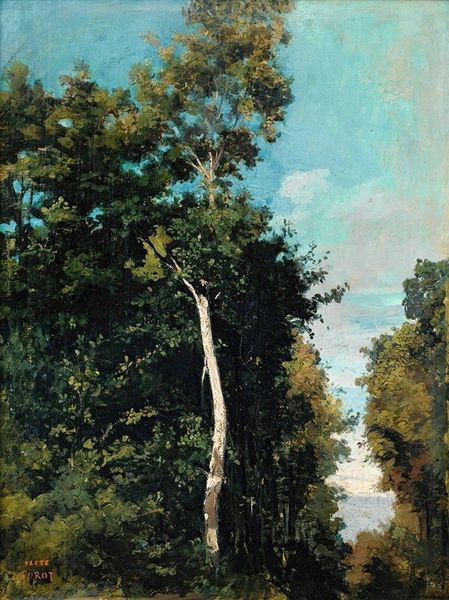
Copyright: Public domain
Curator: Before us is Arkhyp Kuindzhi's painting titled "Ukraine", created in 1879, employing oil paints in the plein-air tradition. Editor: My initial feeling is one of subdued luminosity; there’s a balance between the darkened foreground and that soft, radiant light in the distance, it's incredibly powerful. Curator: Indeed, the composition directs our gaze. Note how Kuindzhi uses a clear horizontal division, splitting earth and sky, foreground and distant fields. This stark division serves to emphasize the vastness of the Ukrainian landscape. Editor: I am interested in the paint application. It feels so immediate, a visible record of the artist's process, almost betraying the hand of the maker. How do these choices enhance, or perhaps challenge, Kuindzhi’s aesthetic vision? The texture isn’t obscured for idealized polish. Curator: Precisely, if we apply a structuralist approach to decode, we will recognize how Kuindzhi uses framing within framing to create layers of meaning. He presents Ukraine almost as a paradisiacal vision. The dark trees frame the bright pastures as if guarding or highlighting its serene beauty. Editor: The work really prompts contemplation about its means of creation and, equally, consumption. I want to know, given Ukraine's troubled history of colonial exploitation of land and serfdom, how that context filters into the symbolic use of that land here, depicted at that time? Curator: One could consider Kuindzhi using the landscape to reflect on the soul of the Ukrainian people or a desire for an idealized state, employing Romanticist themes in an aesthetic celebration of national identity and belonging. Editor: Yes, perhaps, but understanding the social reality helps us analyze both the potency and the possible paradoxes inherent within the image and also serves as a potent reminder that these idealized landscapes can be both beautiful and deeply ideological. Curator: A necessary challenge to my view, reminding us of the intricate relationship between art, materiality, and the socio-political realities that frame their creation and impact. Editor: A final thought on the texture: it's a powerful thing to contemplate how labor and landscape intertwine.
Comments
No comments
Be the first to comment and join the conversation on the ultimate creative platform.
